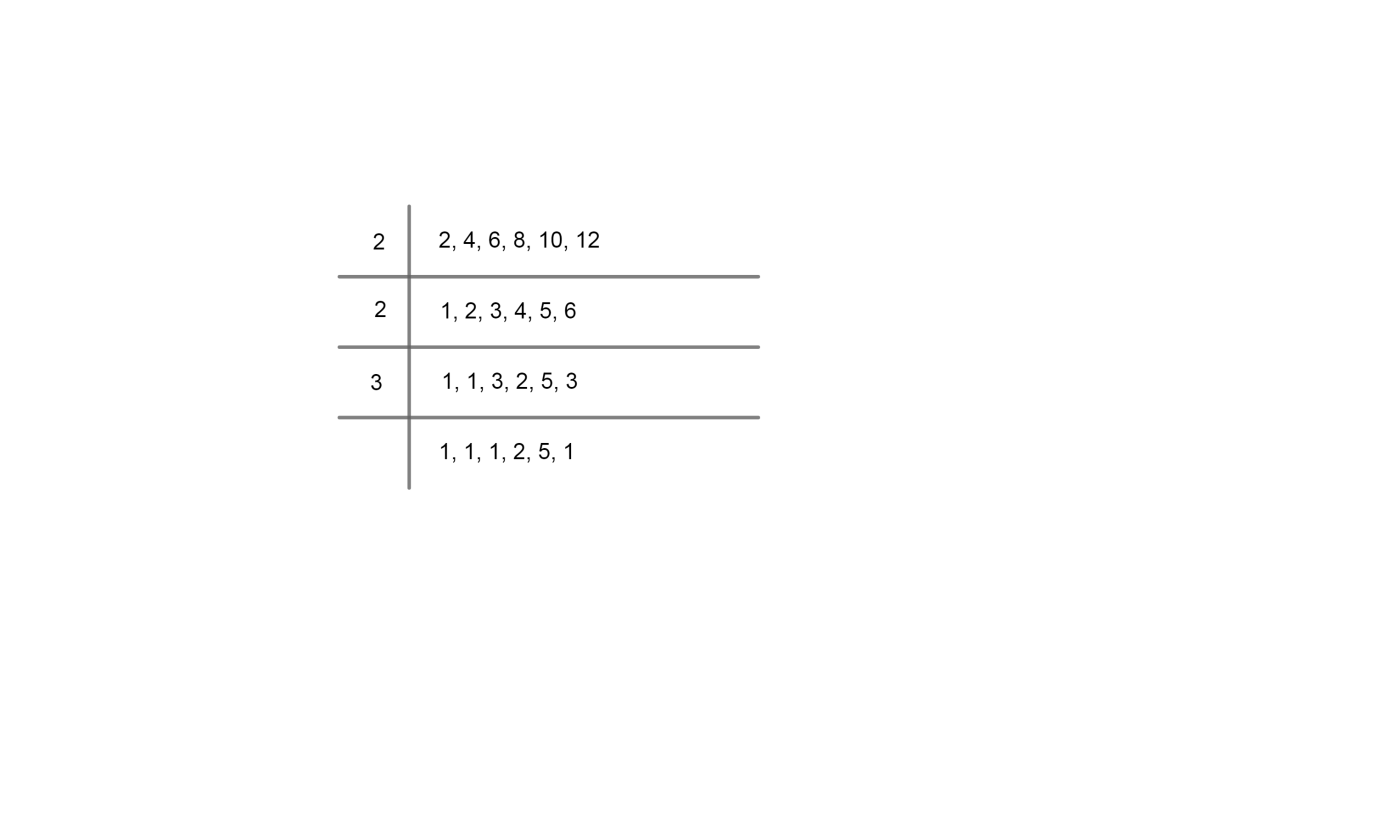
Six bells commence tolling together and toll at intervals of 2, 4, 6, 8, 10 and 12 seconds each. After how much time will they toll together again?
Answer
510k+ views
Hint: As in the question it is asked at what time the entire bells toll together one should try to get LCM of all the time intervals to get the desired result.
Complete step-by-step answer:
We have been given six bells which commence tolling together and toll at intervals of 2, 4, 6, 8, 10 and 12 seconds each.
Now we are asked to find at time will the bells toll together.
We will get the time at which all the bells will toll together is by taking LCM or least common multiple all the six time intervals.
At first we will know what is LCM or least common multiple and how to find it.
In arithmetic the least common multiple, lowest common multiple or smallest common multiple of two integers a and b which is denoted by LCM (a, b) is the smallest possible integer that is divisible by both a and b. Since division of integers by zero is undefined, this definition has meaning only if a and b are both different from zero.
If there are more than two numbers then LCM can be done by division method. The numbers will operate simultaneously. The factors in the division method should divide minimum two numbers and it should be until the last term becomes 1 or a prime number to be divided.
Let's take LCM of the six bells, time intervals which are 2, 4, 6, 8, 10 and 12.
So, it can be represented as,

Now for finding LCM we will multiply the divisors and the prime numbers which are left behind.
So, least common multiple is
= 2 x 2 x 3 x 2 x 5 = 120
Hence, the least common multiple is 120 seconds.
So, all the bells will toll at 120 seconds or 2 minutes.
Note: Students while dealing with application related HCF, LCM problems; they generally confuse themselves as what to choose and how to do it. So they have to practice with these kinds of problems to prevent the confusion. In this student instead of taking LCM, they might take HCF and will get the wrong answer.
Complete step-by-step answer:
We have been given six bells which commence tolling together and toll at intervals of 2, 4, 6, 8, 10 and 12 seconds each.
Now we are asked to find at time will the bells toll together.
We will get the time at which all the bells will toll together is by taking LCM or least common multiple all the six time intervals.
At first we will know what is LCM or least common multiple and how to find it.
In arithmetic the least common multiple, lowest common multiple or smallest common multiple of two integers a and b which is denoted by LCM (a, b) is the smallest possible integer that is divisible by both a and b. Since division of integers by zero is undefined, this definition has meaning only if a and b are both different from zero.
If there are more than two numbers then LCM can be done by division method. The numbers will operate simultaneously. The factors in the division method should divide minimum two numbers and it should be until the last term becomes 1 or a prime number to be divided.
Let's take LCM of the six bells, time intervals which are 2, 4, 6, 8, 10 and 12.
So, it can be represented as,

Now for finding LCM we will multiply the divisors and the prime numbers which are left behind.
So, least common multiple is
= 2 x 2 x 3 x 2 x 5 = 120
Hence, the least common multiple is 120 seconds.
So, all the bells will toll at 120 seconds or 2 minutes.
Note: Students while dealing with application related HCF, LCM problems; they generally confuse themselves as what to choose and how to do it. So they have to practice with these kinds of problems to prevent the confusion. In this student instead of taking LCM, they might take HCF and will get the wrong answer.
Recently Updated Pages
What percentage of the area in India is covered by class 10 social science CBSE

The area of a 6m wide road outside a garden in all class 10 maths CBSE

What is the electric flux through a cube of side 1 class 10 physics CBSE

If one root of x2 x k 0 maybe the square of the other class 10 maths CBSE

The radius and height of a cylinder are in the ratio class 10 maths CBSE

An almirah is sold for 5400 Rs after allowing a discount class 10 maths CBSE

Trending doubts
Change the following sentences into negative and interrogative class 10 english CBSE

Difference between mass and weight class 10 physics CBSE

Saptarishi is the Indian name of which Constellation class 10 social science CBSE

What is the past participle of wear Is it worn or class 10 english CBSE

What is Commercial Farming ? What are its types ? Explain them with Examples

What are five examples of facts and opinions class 10 english CBSE




